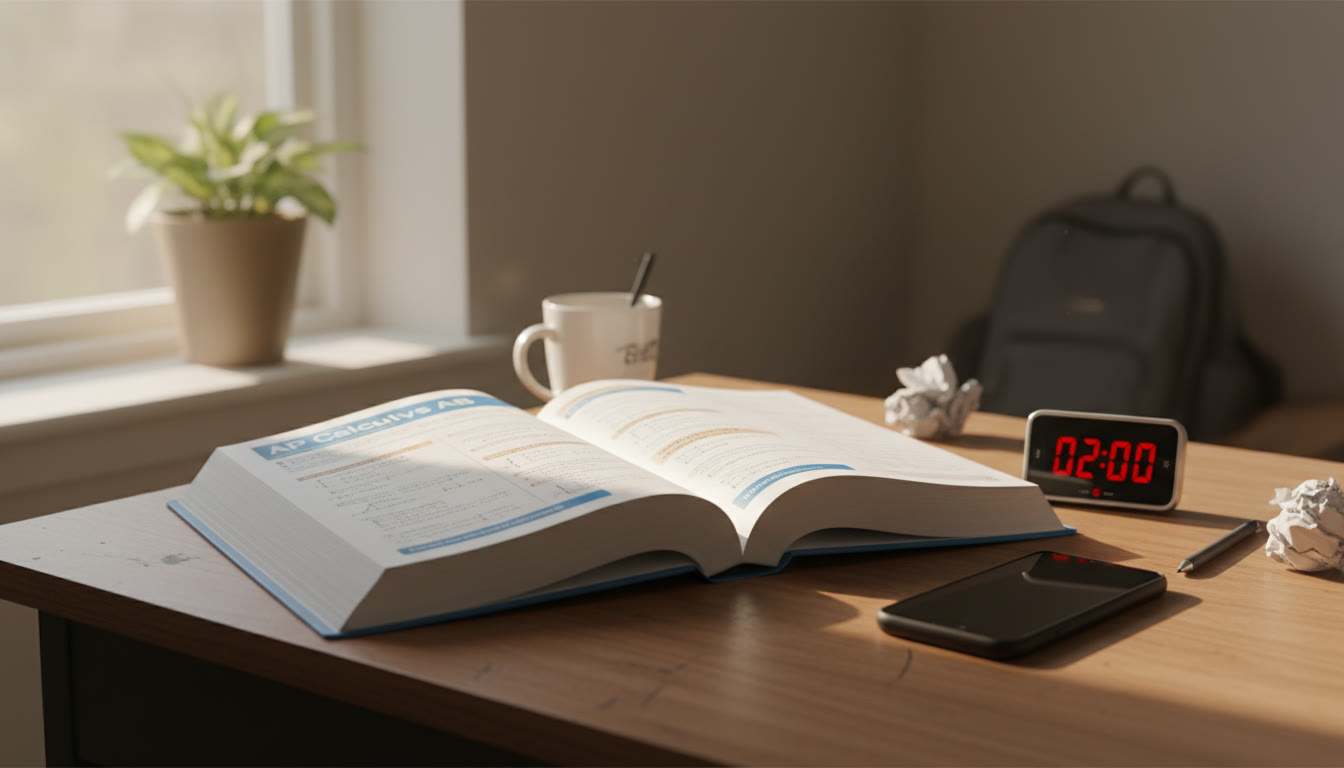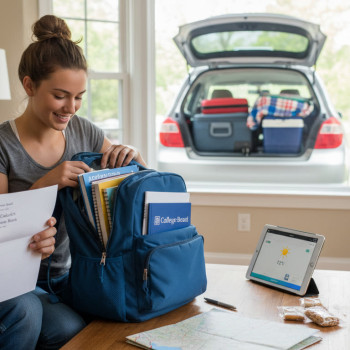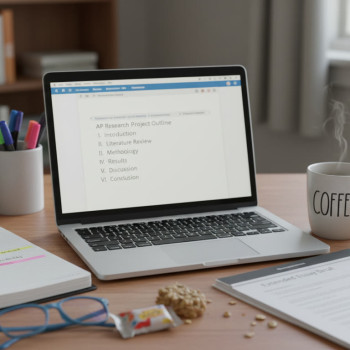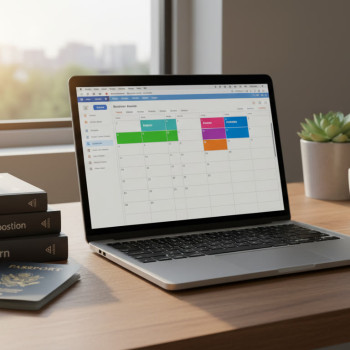Why the First Two Minutes Matter More Than You Think
If you’re an AP student, you already know this: the hardest part of studying isn’t understanding an algebraic proof or memorizing the causes of World War I. It’s getting started. You tell yourself you’ll do fifteen minutes of review, then scroll your phone for forty-five. That’s not laziness—you’re facing a psychological gap between intention and action. The good news? Two minutes is a tiny, powerful bridge.
The two-minute start is borrowed from a simple behavior trick: if a task takes less than two minutes, do it now. But when applied creatively, it becomes a ritual that dissolves the friction around bigger study sessions. This blog is for the student who needs a gentle, science-backed nudge—real strategies you can personalize, examples that fit AP subjects, and a practical study table you can copy into your planner.
How the Two-Minute Start Works (In Plain Terms)
Our brains reward novelty and immediate pleasure. Starting anything unfamiliar or demanding triggers a mental cost: it feels hard. Two-minute starts lower that cost by reframing the beginning as a tiny, nonthreatening action. Once you begin, your brain releases a little dopamine for taking action, and momentum makes it easier to continue.
Think of it like pushing a parked car. The initial force to budge it is high. After it moves a few inches, rolling it becomes easier. Two minutes get you over the push. Often you’ll stop after those two minutes—fine. More often, you’ll keep going. And on days where you can’t, those two minutes still count: you read one quick definition, solved one practice item, or opened a practice test. That micro-win matters.
Why This Is Especially Useful for AP Students
- AP content is dense—starting small helps preserve energy for sustained study later.
- Many AP tasks are repetitive (practice problems, source analysis); short starts reduce avoidance.
- Two-minute starts integrate well with AP Classroom tools, progress checks, and AP Daily videos because they’re easy to schedule.

Designing Your Two-Minute Ritual
Rituals turn decisions into predictable actions. The point isn’t to trick yourself—it’s to make starting as automatic and painless as possible. Here’s a template you can tailor by subject.
Ritual Components
- Clear Cue: A specific trigger that tells your brain: Begin. Example: after dinner, put on headphones.
- Two-Minute Task: A micro-action with one outcome. Example: read one AP Physics concept summary; annotate one paragraph of an AP English source; solve one free-response part A question.
- Small Reward: A brief pleasant cue—sip of tea, five deep breaths, or a checkmark in your planner.
- Optional Stretch: If momentum arrives, continue; if not, stop and count the start as a win.
Examples by AP Subject
- AP Biology: Read one figure caption and sketch the key idea on a sticky note for two minutes.
- AP Calculus: Solve one quick derivative or integral problem—focus on speed rather than perfection.
- AP U.S. History: Read one paragraph from a primary source and write one-sentence context.
- AP Chemistry: Balance one equation or write one quick note about electron affinity trends.
- AP English Language: Annotate one rhetorical device in a paragraph or write one thesis sentence idea.
Turning Two Minutes into a Consistent Habit
Doing one two-minute start occasionally is helpful; making it a habit is transforming. Use these steps to lock it in.
1. Stack It onto a Daily Anchor
Habit stacking means attaching your new two-minute ritual to something you already do. After brushing your teeth, set a timer for two minutes of AP review. After lunch, open AP Classroom and watch one AP Daily video clip. Anchoring reduces mental load: you won’t have to decide when to study, the anchor will tell you.
2. Use Explicit Time Blocks
Two minutes is the start, but schedule a real study block you can graduate into—20 to 50 minutes is a realistic AP study window. Try this pattern:
- 2-minute start (micro-task)
- 5-minute warm-up (review what you just did)
- 25–40 minutes focused study (practice or deeper review)
- 5–10 minute break
3. Make It Easy to Continue
Put study tools where you can reach them. If your two-minute step is to open a previous AP test, keep test printouts in a visible folder. If it’s flashcards, leave the deck on your desk. Remove friction points like logging into multiple apps—use browser tabs or saved passwords so two minutes is truly two minutes.
Practical Examples: A Week of Two-Minute Starts
Below is a sample weekly plan you can adapt. The table is designed to be pasted into a planner or a note app and personalized for your AP subjects.
| Day | Anchor | Two-Minute Start | Follow-Up (20–40 min) | Micro-Reward |
|---|---|---|---|---|
| Monday | After Dinner | Read one AP Biology figure caption | Complete 1 practice set on cellular respiration | Fruit or a 5-min playlist |
| Tuesday | Before Homework | Solve one AP Calculus derivative | Work on 30-min past free-response | Stretch and water |
| Wednesday | After School Bus | Annotate one paragraph of a US History primary source | Outline a short DBQ paragraph | Call a friend |
| Thursday | After Sports Practice | Watch one AP Daily video clip | Do topic questions in AP Classroom | 10-min video |
| Friday | Before Bed | Write one thesis sentence for AP English essay | Practice a timed essay | Weekend plan reward |
Overcoming Common Hurdles
Two-minute starts help, but they’re not magic. Here’s how to troubleshoot when they stall.
“I Do Two Minutes and Stop”
That’s still progress. Count the start as a legitimate win. On most days, two minutes will be enough to keep you learning. To gently encourage continuation, try a one-question rule: after the two-minute start, answer one practice question. That small extension often leads to a full study block.
“I Forget to Do It”
Use reminders tied to anchors and set a visible cue—sticky notes on your mirror, an alarm labeled with what to study, or placing your study materials next to something you use daily. Also, track starts in a simple habit streak (an app or a paper calendar). Seeing a chain of starts is motivating.
“My Environment Distracts Me”
Start by controlling what you can: put your phone on Do Not Disturb or face-down in another room for two minutes. Use noise-cancelling headphones, or play low-focus instrumental music. If your study space is shared, negotiate a short, regular slot where you can have focus time—two minutes is a reasonable ask.
Using Two Minutes to Prepare for AP Exam Logistics
AP exams have formats, timing, and defined skill targets. Two-minute starts help you chip away at exam logistics so they feel familiar by test day.
Familiarize With the Format—Two Minutes at a Time
- Open the exam guide and skim the testing time and section types for two minutes.
- Try two minutes on the exam interface or the Bluebook test preview to reduce tech anxiety.
Practice Timing
Time pressure is a major cause of stress on exam day. Use two-minute starts to warm up timed skills: write one quick paragraph under one-minute constraints, then stretch to a full timed section in the follow-up block. Gradually, your internal clock becomes reliable.
Track Progress Without Getting Overwhelmed
Students often track every grade and minute spent—then burn out. Track what matters: consistency and skill growth. A simple tracker records:
- Date and two-minute start completed
- Follow-up length (20–40 min)
- One specific skill practiced
- Quick self-rating (1–5) of confidence
Review this weekly. Look for patterns: Which anchors work? When do you skip? Adjust anchors and micro-tasks accordingly.
How Sparkl’s Personalized Tutoring Fits Naturally
Sometimes momentum stalls because you’re unsure what to practice next. That’s where tailored support shines. Sparkl’s personalized tutoring offers 1-on-1 guidance and tailored study plans that convert what you learn from two-minute starts into focused, high-impact follow-ups. Expert tutors can help you design micro-tasks that match your AP exam targets and use AI-driven insights to highlight the most useful practice items—so your two minutes lead to measurable progress, not busywork.
Use Sparkl for:
- Customized two-minute ritual ideas specific to your AP subjects.
- Short, targeted practice sets you can complete in a follow-up block.
- Accountability check-ins that keep your streaks alive and meaningful.

Real-World Examples: Students Who Turned Two Minutes into Aced APs
Stories are useful because they show application, not theory. Imagine three students:
- Jamal (AP Chemistry): He used a two-minute start to balance one reaction. That small action turned into 40-minute lab-practice blocks three times a week. He stopped avoiding stoichiometry and improved his free-response accuracy.
- Sofia (AP English Language): Her two-minute ritual was to underline one rhetorical device in a short passage. Over the semester, she built a notebook of annotated examples, which made crafting evidence-rich essays on test day straightforward.
- Priya (AP Calculus): She started each session by solving one quick derivative; this warmed her brain for deeper problem sets. She paired this with Sparkl’s targeted practice problems and saw steady improvement in timed sections.
These students didn’t have more hours; they had better starts. They used small actions to build confidence and create real study rituals.
Measuring What Matters: Skills, Not Hours
AP success isn’t purely about counting hours. It’s about targeted growth. Replace vague goals like “study chemistry more” with measurable goals like “explain the mechanism of nucleophilic substitution in my own words” or “score 6/6 on the AP free-response rubric for a sample question.” Two-minute starts prime you to approach those focused targets consistently.
Sample Skill-Focused Goals
- Be able to summarize one primary source and state its author’s perspective in two sentences.
- Solve one representative multiple-choice item for AP Physics every day for five days and chart accuracy.
- Write one coherent evidence paragraph for AP U.S. History twice a week.
When to Seek Extra Help
If two-minute starts and consistent practice aren’t moving the needle, it may be time for targeted help. Signs include plateauing scores on practice exams, persistent confusion on specific skills, or chronic anxiety that sabotages focus. This is perfectly normal—AP material is challenging by design. A short run of focused tutoring, like Sparkl’s 1-on-1 sessions, can diagnose bottlenecks and prescribe tailored micro-practice, which is an efficient way to convert your study starts into score improvements.
Final Checklist: Your Two-Minute Start Toolkit
Use this checklist to assemble a portable toolkit. Keep it somewhere visible and tweak it as needed.
- Clear anchor(s) in your daily routine
- Three two-minute micro-tasks tailored to your AP subject(s)
- Prepared follow-up materials (practice sets, past free-responses, AP Daily video links)
- One small reward per session
- Simple tracking (calendar, streak app, or notebook)
- An accountability contact or tutor for weekly check-ins
Parting Thought: Small Starts, Big Results
AP exams ask you to show what you know under pressure. Building a muscle for starting—one small, consistent action after another—learns you to show up. Two-minute starts are deceptively simple, but they change the game by making study initiation easy, repeatable, and psychologically satisfying.
So tonight, pick one two-minute task. Don’t aim for perfection—aim for beginning. Open a page, solve one question, or write one sentence. When you give yourself permission to start small, you give yourself permission to succeed at something far bigger.
Want a Little Extra Help?
If designing micro-tasks, creating a personalized schedule, or diagnosing sticking points sounds overwhelming, consider short-term personalized tutoring. Sparkl’s tutors help craft two-minute rituals that match your AP goals, provide 1-on-1 guidance, and use AI-driven insights to track weaknesses so each study block is efficient and targeted. A few focused sessions can turn hesitant starts into confident progress.
Ready to try? Set a timer for two minutes now—open a page—and remember: the smallest step is still a step forward.























No Comments
Leave a comment Cancel